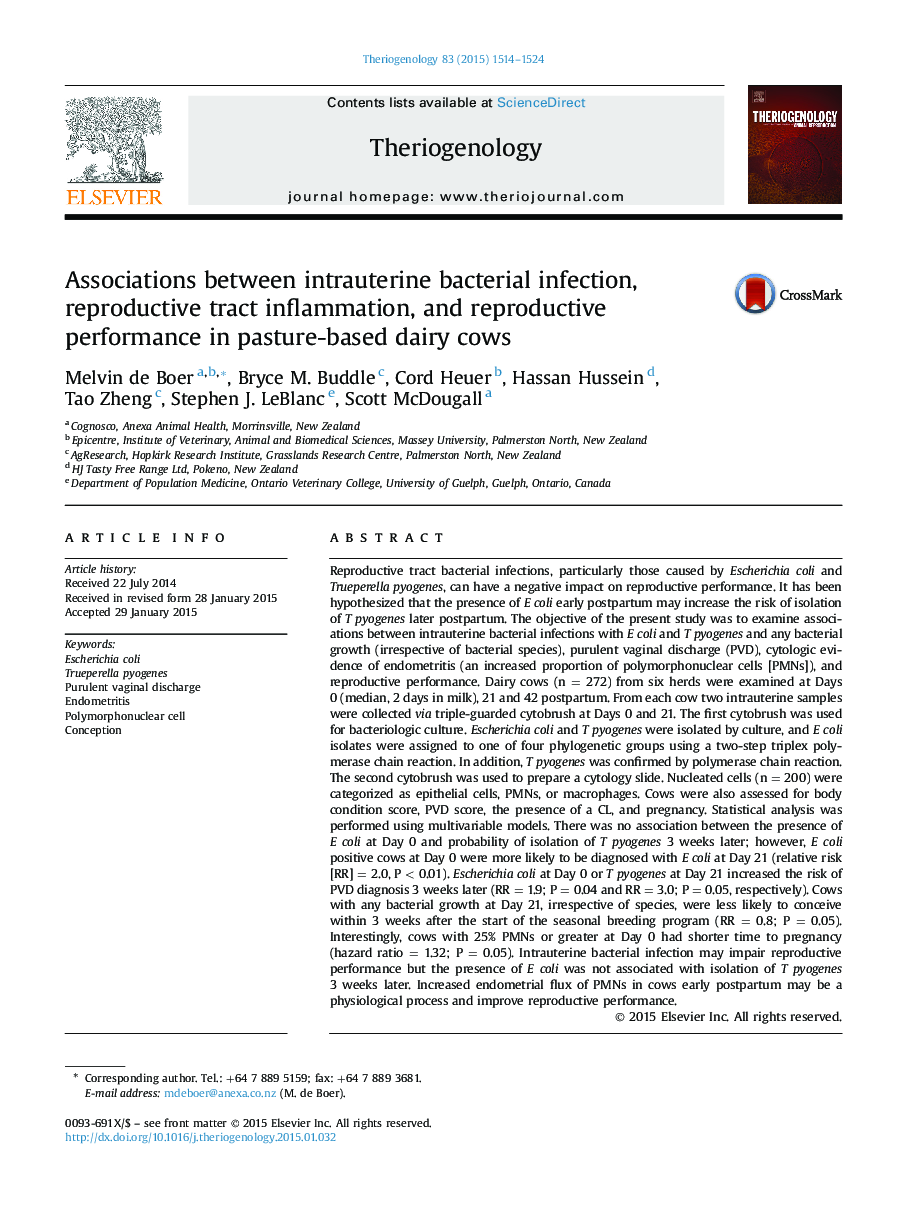| کد مقاله | کد نشریه | سال انتشار | مقاله انگلیسی | نسخه تمام متن |
|---|---|---|---|---|
| 2095127 | 1082075 | 2015 | 11 صفحه PDF | دانلود رایگان |
Reproductive tract bacterial infections, particularly those caused by Escherichia coli and Trueperella pyogenes, can have a negative impact on reproductive performance. It has been hypothesized that the presence of E coli early postpartum may increase the risk of isolation of T pyogenes later postpartum. The objective of the present study was to examine associations between intrauterine bacterial infections with E coli and T pyogenes and any bacterial growth (irrespective of bacterial species), purulent vaginal discharge (PVD), cytologic evidence of endometritis (an increased proportion of polymorphonuclear cells [PMNs]), and reproductive performance. Dairy cows (n = 272) from six herds were examined at Days 0 (median, 2 days in milk), 21 and 42 postpartum. From each cow two intrauterine samples were collected via triple-guarded cytobrush at Days 0 and 21. The first cytobrush was used for bacteriologic culture. Escherichia coli and T pyogenes were isolated by culture, and E coli isolates were assigned to one of four phylogenetic groups using a two-step triplex polymerase chain reaction. In addition, T pyogenes was confirmed by polymerase chain reaction. The second cytobrush was used to prepare a cytology slide. Nucleated cells (n = 200) were categorized as epithelial cells, PMNs, or macrophages. Cows were also assessed for body condition score, PVD score, the presence of a CL, and pregnancy. Statistical analysis was performed using multivariable models. There was no association between the presence of E coli at Day 0 and probability of isolation of T pyogenes 3 weeks later; however, E coli positive cows at Day 0 were more likely to be diagnosed with E coli at Day 21 (relative risk [RR] = 2.0, P < 0.01). Escherichia coli at Day 0 or T pyogenes at Day 21 increased the risk of PVD diagnosis 3 weeks later (RR = 1.9; P = 0.04 and RR = 3.0; P = 0.05, respectively). Cows with any bacterial growth at Day 21, irrespective of species, were less likely to conceive within 3 weeks after the start of the seasonal breeding program (RR = 0.8; P = 0.05). Interestingly, cows with 25% PMNs or greater at Day 0 had shorter time to pregnancy (hazard ratio = 1.32; P = 0.05). Intrauterine bacterial infection may impair reproductive performance but the presence of E coli was not associated with isolation of T pyogenes 3 weeks later. Increased endometrial flux of PMNs in cows early postpartum may be a physiological process and improve reproductive performance.
Journal: Theriogenology - Volume 83, Issue 9, June 2015, Pages 1514–1524
